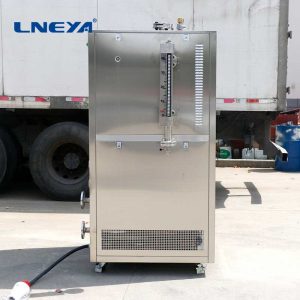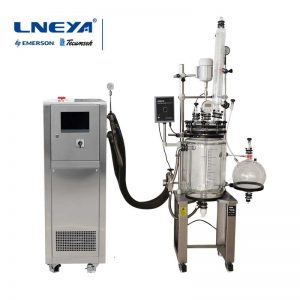Refrigeration and Heating Circulation System Used for Double-layer Glass Reactor
Double-layer glass reactors with refrigeration and heating circulation systems are a common equipment combination in laboratories and are widely used in chemistry, biology, medicine and other fields.
Connection method between double-layer glass reactor and refrigeration and heating circulation system
1. Equipment preparation
Ensure that the double-layer glass reactor and refrigeration and heating circulation systems are in good condition, all components are intact, and appropriate accessories and tools are selected according to experimental needs.
2. Connect the pipes
Use high temperature resistant and corrosion resistant hoses to connect the inlet and outlet of the double-layer glass reactor with the corresponding interfaces of the refrigeration and heating circulation systems. Make sure the connections are tight and reliable to prevent liquid or air leakage.
3. Check the tightness
After the connection is completed, check whether each connection is well sealed and ensure there is no leakage. If there is leakage, the connection parts should be rechecked and the tightening should be adjusted.
4. Debugging equipment
Turn on the refrigeration and heating cycle systems, adjust the temperature to the range required for the experiment, and observe the temperature changes in the double-layer glass reactor. At the same time, check whether the circulation pump is working properly and ensure that the circulating fluid can flow smoothly.
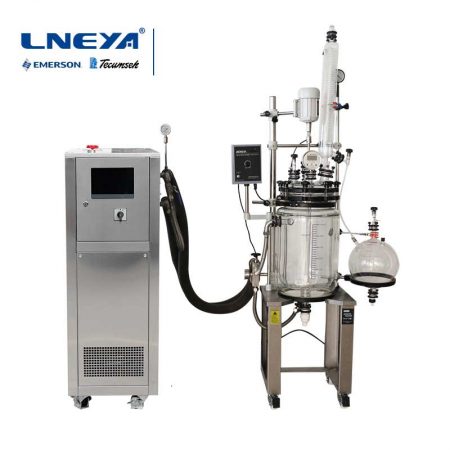
Precautions during use
1. Operating specifications
During the operation, the equipment instructions and experimental procedures should be strictly followed to ensure the safety and accuracy of the experiment.
2. Temperature control
During the experiment, you should pay close attention to the temperature changes in the double-layer glass reactor, and adjust the temperature settings of the refrigeration and heating cycle systems according to the experimental needs. Avoid temperatures that are too high or too low to affect the experimental results.
3. Liquid level check
Regularly check the liquid level in the double-layer glass reactor to ensure sufficient circulating liquid volume to avoid equipment damage or experimental failure due to low liquid level.
4. Maintenance
Regularly maintain the double-layer glass reactor and the refrigeration and heating circulation system, clean the surface of the equipment and internal pipes, check the wear and tear of each component, and replace damaged components in a timely manner.
5. Security protection
During the experiment, personal protective equipment such as protective glasses and gloves should be worn to avoid direct contact with high temperatures or corrosive substances. At the same time, keep the laboratory well ventilated to avoid the accumulation of toxic and harmful gases.
6. Exception handling
If an abnormality or malfunction is found in the equipment during the experiment, the experiment should be stopped immediately, the power of the equipment should be turned off, and professionals should be contacted for repair in a timely manner.
7. Processing after the experiment
After the experiment, the refrigeration and heating circulation systems should be closed and the connecting pipes between the double-layer glass reactor and the equipment should be disconnected. Clean the experimental site, return the equipment and organize the experimental data.
In summary, the double-layer glass reactor with refrigeration and heating circulation system plays an important role in the experimental process. By following the correct connection methods and precautions, the safety and smooth progress of the experiment can be ensured, the experimental efficiency can be improved, and the accuracy of the experimental results can be guaranteed. Therefore, when using these equipment, experimenters should fully understand and master the relevant operating skills and precautions to ensure the smooth progress of the experiment and the safety and stability of the laboratory.
We provide complete temperature control systems design and manufacturing. From standard models to complete customized products. We specialize in customer service and are dedicated to helping each customer have the optimal temperature control system for their specific need.
私達は標準外カスタマイズされた解決を提供します。単一の冷却のスリラーおよび冷却及び暖房のコンボの単位は両方利用できます。
Eメール lilia@lneya.com WeChat ID: +8615251628237 WhatsApp: +86 17851209193

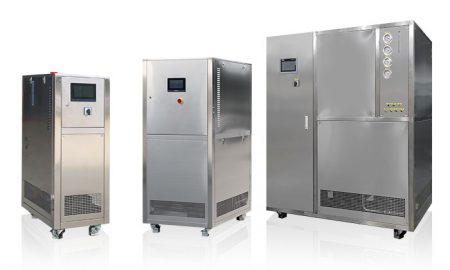
冷暖房システム (SUNDIシリーズ)
- 温度範囲:-120℃〜+350
- 高精度でインテリジェントな温度制御
- 冷却能力:0.5kW~1200kW
- 熱流体の寿命を延ばす完全密閉システム
- 各装置は12時間以上の負荷テストを実施
| 温度範囲 | -10 ~ +150℃シリーズ | -25 ~ +200℃シリーズ | -25 ~ +300℃シリーズ | -45 ~ +250°C シリーズ | -45 ~ +300℃シリーズ | -60 ~ +250°C シリーズ | -60 ~ +300℃シリーズ | -70 ~ +250°C シリーズ | -80 ~ +250°C シリーズ | -90 ~ +250°C シリーズ | -100 ~ +100℃シリーズ | ||
| 冷却能力 | 1.5 ~ 15kW | 1~200kW | 1~200kW | 0.45~200kW | 0.9 ~ 25kW | 0.25 ~ 60kW | 0.75 ~ 25kW | 0.4 ~ 15kW | 0.3 ~ 80kW | 0.2 ~ 80kW | 0.45 ~ 80kW | ||
| 注: -150℃の~ +350℃からの温度較差および冷却容量はカスタマイズすることができる | |||||||||||||
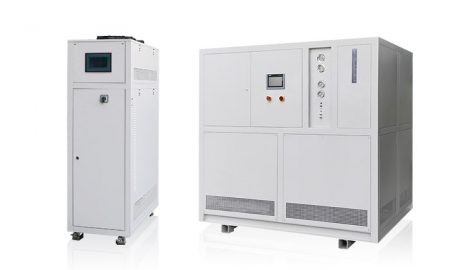
冷暖房システム(WTDシリーズ)
- (マイクロチャンネル・チューブリアクター特化型)
- 温度範囲:-70℃〜+300
- 高性能循環ポンプ、より安定した温度制御効果
- 幅広い温度範囲で、より多くの業界のニーズに対応
- 各装置は12時間以上の負荷テストを実施
| 温度範囲 | -70°C ~ +300°C | -45°C ~ +250°C | -70°C ~ +200°C | ||||||
| 冷却能力 | 1.1 ~ 7.5kW | 1.5 ~ 5.5kW | 11~50kW | ||||||
| 注: -150℃の~ +350℃からの温度較差および冷却容量はカスタマイズすることができる | |||||||||
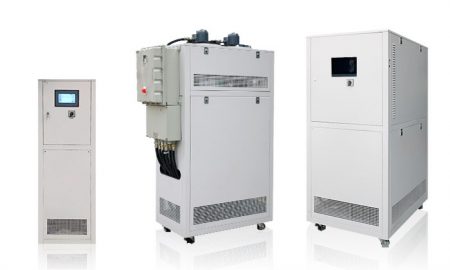
冷暖房サーキュレーター
- 温度範囲:-45℃〜+250
- エマソンのコープランドコンプレッサー、信頼できる品質
- 自己診断機能、複数の安全保護装置
- 熱流体の寿命を延ばす完全密閉システム
- 各装置は12時間以上の負荷テストを実施
| 温度範囲 | -25°C ~ +200°Cシリーズ | -45°C ~ +250°C シリーズ | |||||||
| 冷却能力 | 1 ~ 15kW | 0.25 ~ 15kW | |||||||
| 注: -150℃の~ +350℃からの温度較差および冷却容量はカスタマイズすることができる | |||||||||
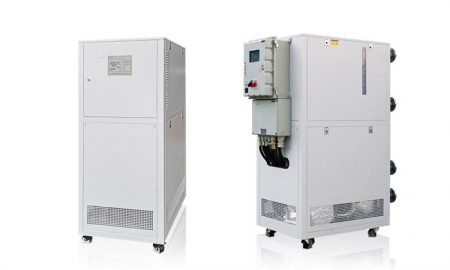
加熱サーキュレーター
- 温度範囲+50℃ ~ +300℃
- 熱交換面積が大きく、加熱速度が速い
- 自己診断機能、複数の安全保護装置
- クローズド循環システム、高温時のオイルミストなし
- 各装置は12時間以上の負荷テストを実施
| 温度範囲 | +50°C ~ +170°C(UCシリーズ) | +50°C ~ +300°C(UCシリーズ) | +50°C ~ +300°C(USTシリーズ) | ||||||
| 暖房能力 | 5.5 ~ 15kW | 3.5~130kW | 3.5〜95kW | ||||||
| 注: -150℃の~ +350℃からの温度較差および冷却容量はカスタマイズすることができる | |||||||||
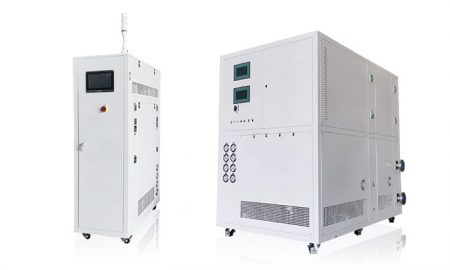
TESシリーズ(燃料・油試験用温度制御装置)
- 温度範囲:-85℃〜+250
- シーメンスPLCコントローラおよびその他のブランドアクセサリー
- 自己診断機能、複数の安全保護装置
- 完全密閉式循環システムにより、高温時のオイルミスト発生なし
- 各装置は12時間以上の負荷テストを実施
| 温度範囲 | -45°C ~ +250°C シリーズ | -85°C ~ +200°Cシリーズ | -60°C ~ +200°Cシリーズ | ||||||
| 冷却能力 | 0.3 ~ 25kW | 0.25 ~ 25kW | 3〜60kW | ||||||
| 注: -150℃の~ +350℃からの温度較差および冷却容量はカスタマイズすることができる | |||||||||
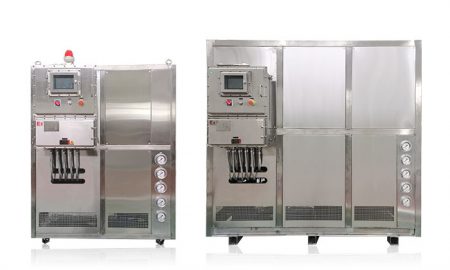
TCU マルチリアクター温度制御システム
- 温度範囲:-120℃〜+250
- 密閉された再現可能な温度制御
- 電気暖房熱油補助システム内蔵
- ニーズに応じて冷熱・熱源熱交換モジュールを追加する
- 各装置は12時間以上の負荷テストを実施
| 温度範囲 | -45°C ~ +250°C シリーズ | -120°C ~ +250°Cシリーズ | カスタマイズされた温度制御システム | RT+10°C ~ +135°C | |||||
| 暖房能力 | 25~80kW | 25~80kW | カスタム | 25~300kW | |||||
| 注: -150℃の~ +350℃からの温度較差および冷却容量はカスタマイズすることができる | |||||||||
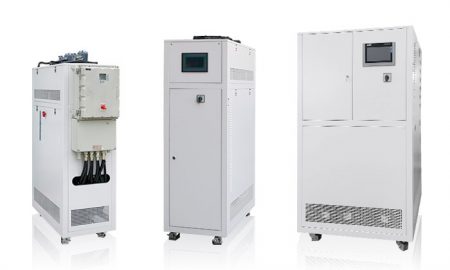
循環式チラー / 冷凍サーキュレーター
(カスタムデザイン)
チラーは様々な産業や研究所で広く使用することができ、カスタマイズされた設計をサポートしています。
| 温度範囲 | -25°C ~ +30°Cシリーズ | -45°C ~ +30°Cシリーズ | -60°C ~ -20°Cシリーズ | -80°C ~ -20°Cシリーズ | -120°C ~ -70°Cシリーズ | ||||
| 冷却能力 | 0.8 ~ 30kW | 0.75 ~ 12kW | 0.4 ~ 6kW | 0.2 ~ 6kW | 0.3 ~ 5kW | ||||
| 注: -150℃の~ +350℃からの温度較差および冷却容量はカスタマイズすることができる | |||||||||
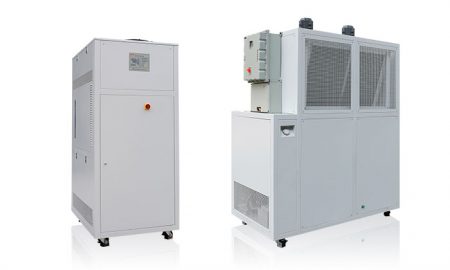 ミニチラー/小型チラー
ミニチラー/小型チラー
(カスタムデザイン)
チラーは様々な産業や研究所で広く使用することができ、カスタマイズされた設計をサポートしています。
| 温度範囲 | -18°C ~ +30°C | +5°C ~ +35°Cシリーズ | |||||||
| 冷却能力 | 0.35 ~ 0.9kW | 1.8~50kW | |||||||
| 注: -150℃の~ +350℃からの温度較差および冷却容量はカスタマイズすることができる | |||||||||
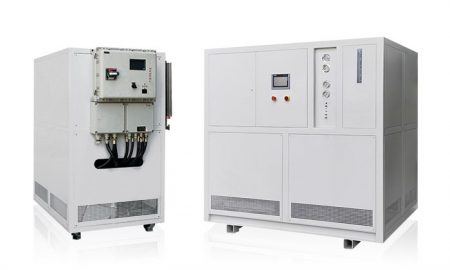
低温チラー
(カスタムデザイン)
当社は、-150℃の温度制御範囲を持つ低温冷凍機の生産を専門としており、さまざまな業界の冷凍ニーズを満たすことができます。
| 温度範囲 | -25°C ~ -5°Cシリーズ | -45°C ~ -10°Cシリーズ | -60°C ~ -10°Cシリーズ | -80°C ~ -30°Cシリーズ | -110°C ~ -50°Cシリーズ | -150℃〜-110℃シリーズ | |||
| 冷却能力 | 12~360kW | 6~180kW | 6~180kW | 4〜180kW | 2~120kW | 2.5 ~ 11kW | |||
| 注: -150℃の~ +350℃からの温度較差および冷却容量はカスタマイズすることができる | |||||||||
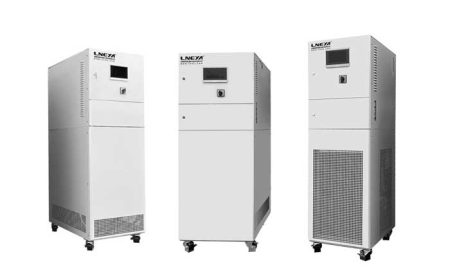
高温チラー
(カスタムデザイン)
チラーは様々な産業や研究所で広く使用することができ、カスタマイズされた設計をサポートしています。
| 温度範囲 | +5°C ~ +40°C | -25°C ~ +40°C | -45°C ~ +40°C | -80°C ~ +80°C | -100°C ~ +80°C | ||||
| 冷却能力 | 6〜40kW | 2~15kW | 1~8kW | 0.6 ~ 3kW | 1.5~3kW | ||||
| 注: -150℃の~ +350℃からの温度較差および冷却容量はカスタマイズすることができる | |||||||||
 LNEYA
LNEYA
 简体中文
简体中文













































































